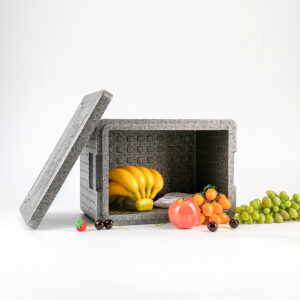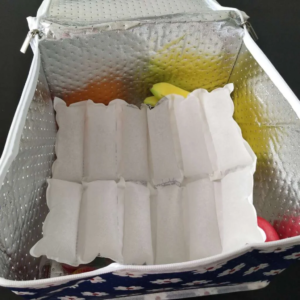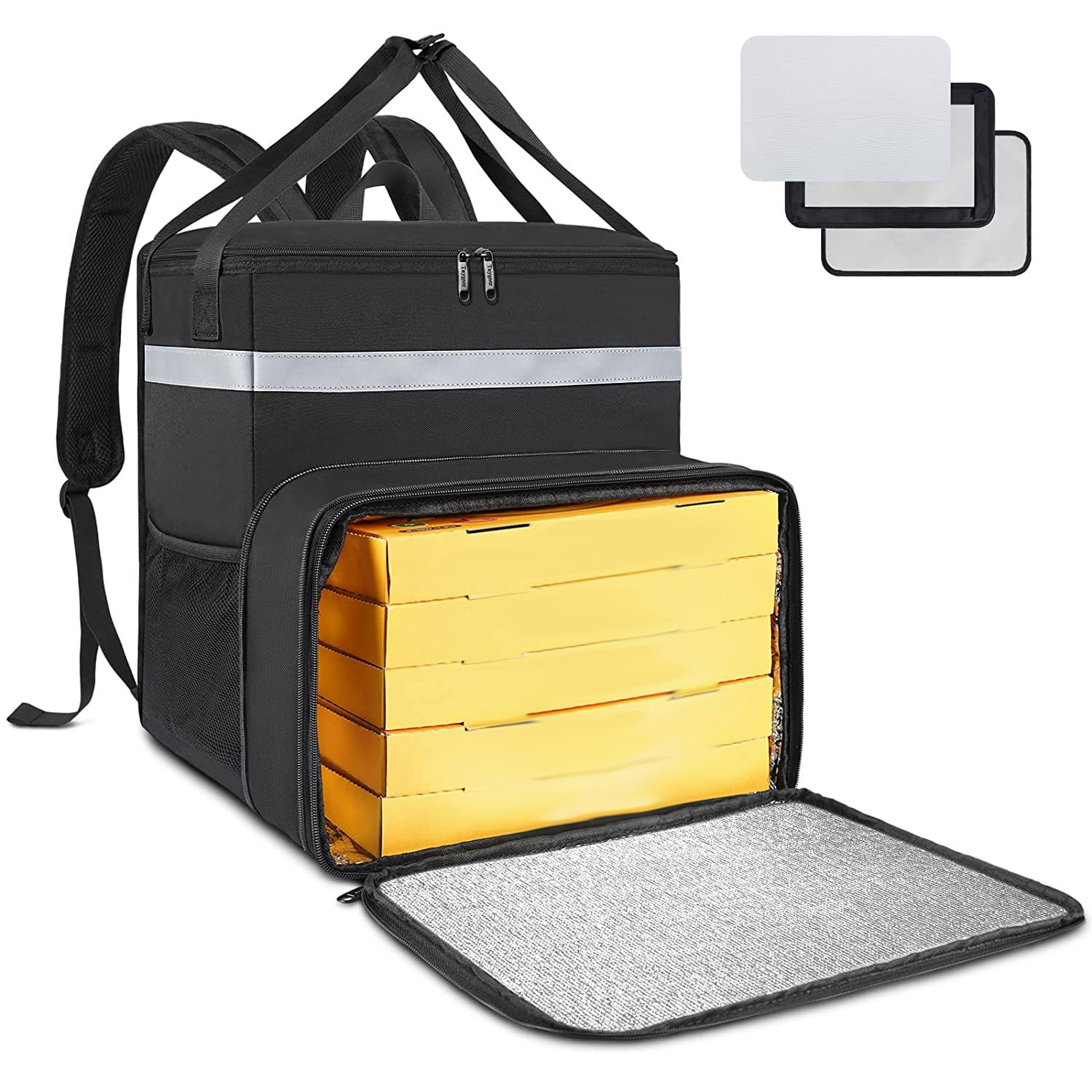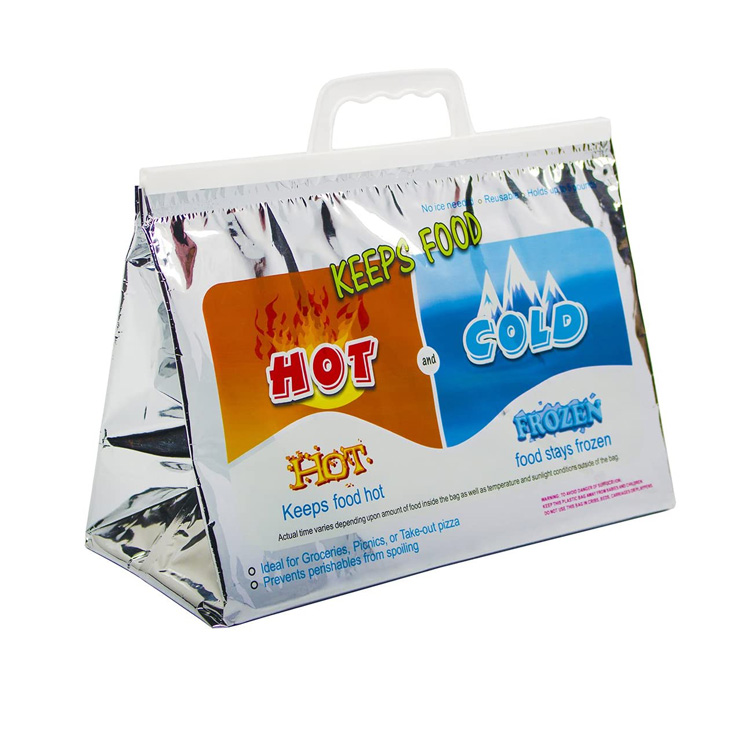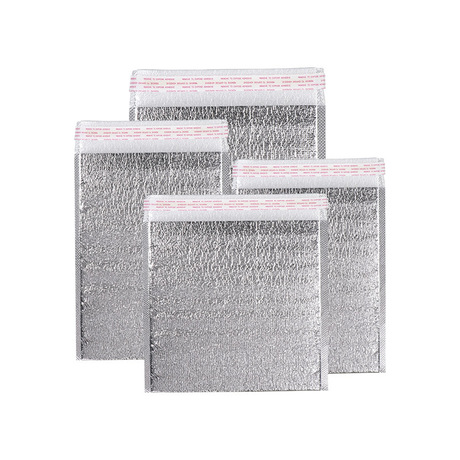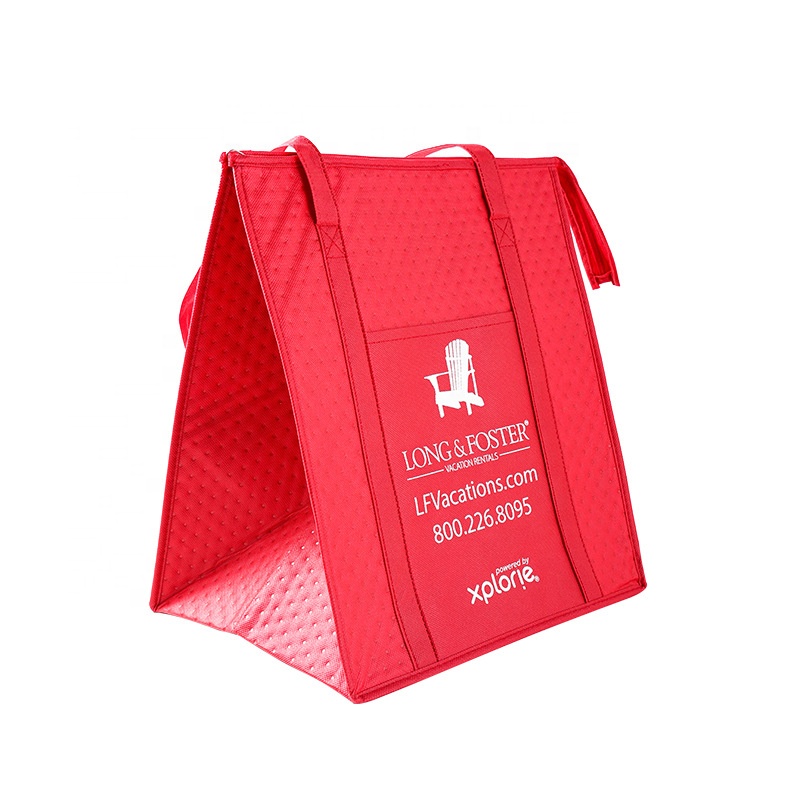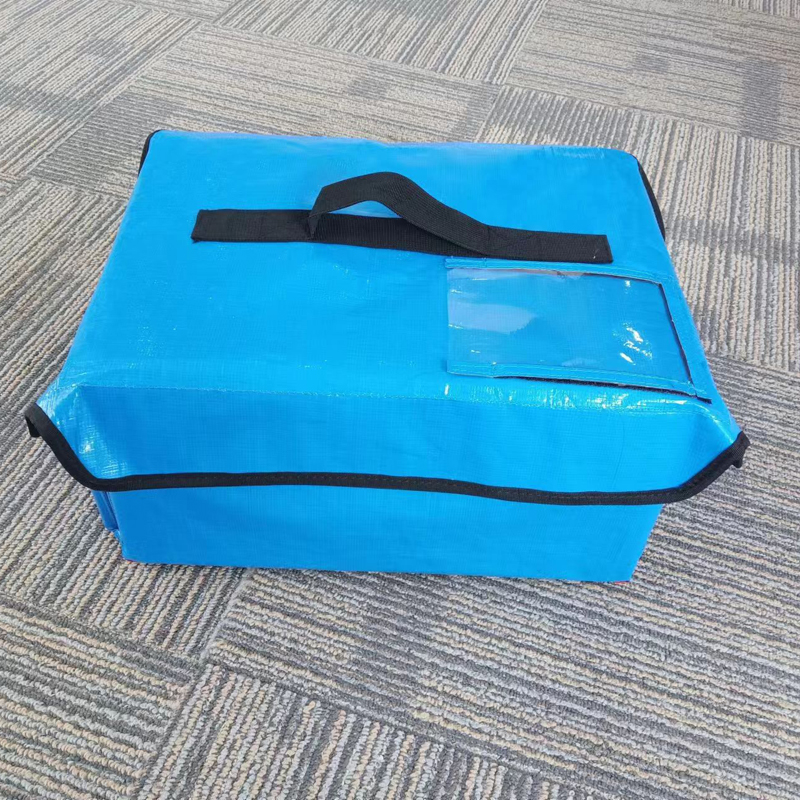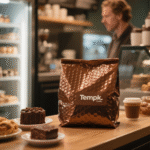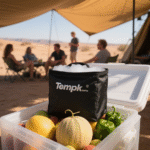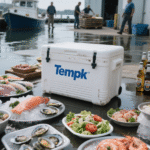In the fast-paced world of modern delivery services, time is crucial, and customer satisfaction is paramount. Delivery insulated bags have become a game-changing innovation in the industry. These bags are not just ordinary carriers; they are the unsung heroes that ensure your food, bebidas, or even temperature-sensitive items reach their destination in perfect condition. Entonces, what exactly are delivery insulated bags, and how do they work their temperature-regulating magic? Let’s explore the secrets of these remarkable tools.
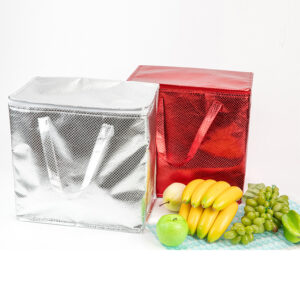
The Importance of Delivery Insulated Bags
Delivery insulated bags play a critical role in maintaining the quality and integrity of items during transit. Whether it’s a hot meal from your favorite restaurant, a cold beverage on a scorching day, or a delicate medical sample requiring specific temperature ranges, these bags act as a protective shield against temperature fluctuations.
For food delivery services, insulated bags are essential for preserving the taste, texture, and safety of food. A piping hot pizza delivered in an insulated bag is more likely to maintain its crispy crust and melted cheese, just as it was when it left the oven. Similarmente, a refreshing salad or tub of ice cream can stay fresh and cool, preventing wilting or melting. This not only enhances the customer experience but also reduces food waste by ensuring the food remains edible upon arrival.
In the medical and pharmaceutical industries, delivery insulated bags are crucial for transporting temperature-sensitive medications, vacunas, and diagnostic samples. Maintaining the correct temperature is vital for preserving the efficacy and safety of these products. Por ejemplo, vaccines often need to be stored and transported at specific cold temperatures to remain effective. An insulated bag with ice packs or other cooling mechanisms ensures that vaccines are transported at the proper temperature, safeguarding public health.
How Delivery Insulated Bags Work
Delivery insulated bags use a combination of materials and technologies to minimize heat transfer. The key components contributing to their insulating properties include:
- Materiales aislantes: Most insulated bags use materials with low thermal conductivity, como la espuma, polyester, or specialized thermal fabrics. These materials effectively trap air, which is a poor conductor of heat. By creating a barrier of trapped air, the insulating materials slow down the transfer of heat between the inside and outside of the bag. Por ejemplo, foam insulation has tiny air pockets that prevent heat from easily passing through, whether it’s trying to enter the bag from the hot outside environment or escape from the warm food inside.
- Revestimientos reflectantes: Some insulated bags feature reflective linings, often made of aluminum foil or other reflective materials. These linings work by reflecting heat back towards its source. If heat is attempting to enter the bag from the outside, the reflective lining bounces it back, reducing the amount of heat that can penetrate the bag. Similarmente, if heat is trying to escape from the hot contents inside, the reflective surface reflects it back in, helping to maintain the internal temperature.
- Sealing Mechanisms: A proper seal is essential for an insulated bag to function effectively. Cremalleras de alta calidad, Velcro closures, or drawstrings are used to ensure there are no gaps or openings through which heat can escape or enter. A tight seal helps to create a closed-off environment within the bag, further enhancing its insulating capabilities.
When hot items are placed inside an insulated bag, the insulating materials and reflective lining work together to prevent heat from escaping. The trapped air in the insulation acts as a buffer, and the reflective lining bounces any heat that tries to escape back into the bag. Por otro lado, when cold items are placed inside, the bag prevents heat from the outside environment from entering, keeping the contents cold. This process allows the items to maintain their desired temperature for an extended period, depending on the quality of the insulation and external conditions.
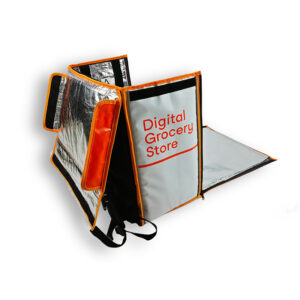
Types of Delivery Insulated Bags
1. Soft-Sided Insulated Bags
Soft-sided insulated bags are very popular in the delivery industry. They are typically made from flexible materials like nylon or polyester, which make them lightweight and easy to carry. These bags often have a padded interior filled with aislamiento de espuma to enhance their temperature control capabilities.
- Small Soft-Sided Insulated Bags are perfect for delivering individual meals, a few sandwiches, o bebidas. They easily fit into a delivery person’s backpack, bike basket, or scooter storage compartment.
- Large Soft-Sided Insulated Bags can accommodate multiple food containers, cajas de pizza, or even a full catering order. They are commonly used by food delivery services handling larger orders or by individuals needing to transport significant amounts of food, such as for family gatherings or picnics.
2. Hard-Sided Insulated Bags
Hard-sided insulated bags offer increased durability and, in some cases, better insulation. They are typically made from hard plastic, composite materials, or even metal in some high-end models. The rigid structure of hard-sided bags provides added protection against external impacts, making them ideal for transporting delicate or valuable items.
- Por ejemplo, if you’re delivering a tiered cake for a special occasion or a box of expensive chocolates, a hard-sided insulated bag can protect these items from damage during transit.
- The insulation in hard-sided bags is often enhanced by thick foam layers, vacuum-sealed compartments, or other advanced insulating technologies. This allows them to maintain a stable temperature for a longer time, making them suitable for long-distance deliveries or extreme weather conditions.
3. Backpack-Style Insulated Bags
Backpack-style insulated bags are designed with the convenience of the delivery person in mind, equipped with correas de hombro for easy carrying, leaving the hands free for other tasks. These bags are typically soft-sided but have a well-insulated interior to maintain the correct temperature.
- This design is especially useful for delivery personnel in urban areas, where they need to navigate narrow streets or crowded spaces while ensuring the food remains at the right temperature.
- The backpack design also distributes the weight more evenly, reducing fatigue, especially for long-duration wear.
Key Features to Consider When Choosing Delivery Insulated Bags
1. Calidad de aislamiento
When choosing a delivery insulated bag, insulation quality is the most important factor. Look for bags made with high-quality insulating materials and thick insulation layers. A well-insulated bag can keep food hot or cold for several hours, Dependiendo de las condiciones externas.
2. Tamaño y capacidad
The size and capacity of the insulated bag should be carefully chosen based on your delivery needs.
- For Individual Meals: A small insulated bag will suffice.
- For Large Orders: Opt for a large capacity bag to prevent food from being squeezed or damaged due to limited space.
3. Durabilidad
Delivery insulated bags are used frequently and may be subjected to rough handling, so durability is key. Choose bags made from tear-resistant, impermeable, y wear-resistant materials, and ensure that stitching is reinforced and zippers are sturdy.
4. Facilidad de limpieza
Food spills are inevitable, so choose an insulated bag that is easy to clean. Bags made from materials that can be wiped down or are machine washable are ideal. Some bags come with removable liners, which make cleaning even easier.
How to Use Delivery Insulated Bags Effectively
1. Pre-heating or Pre-cooling
- For Hot Food Deliveries: Place a hot water bottle or heated brick in the bag for a few minutes to pre-heat it, which helps the hot food stay warmer longer.
- For Cold Food Deliveries: Usar ice packs or pre-cool the insulated bag to maintain cold temperatures.
2. Proper Packing
- Separate Hot and Cold Items: Usar dividers to minimize heat transfer between hot and cold foods.
- Ensure Proper Sealing: A loose-fitting bag can disrupt temperature control. Ensure the bag is tightly sealed, using zippers, Velcro, or drawstrings.
3. Use Extra Temperature-Control Elements
- Cold Food: Add bolsas de hielo for temperature control.
- Hot Food: Usar chemical warmers o rechargeable heating pads to maintain warmth.
Where to Find Delivery Insulated Bags
1. Online Retailers
Websites like Amazon, eBay, and specialized food service equipment websites offer a wide range of delivery insulated bags. Shopping online lets you compare prices, check reviews, and have bags delivered directly to your doorstep.
2. Local Restaurant Supply Stores
Visit local supply stores to physically inspect the quality of the bags. These stores may also have bags specifically designed for food delivery with features not easily found online.
3. Custom-Made Options
If you need custom branding or specific sizes, consider custom-made insulated bags. This option, though more expensive, allows for a tailored fit for your needs.
Conclusión
Delivery insulated bags are essential tools in ensuring that food and other temperature-sensitive items are delivered in the best condition. By choosing the right type of bag and using it effectively, you can enhance customer satisfaction and service quality. Whether you’re delivering food, medicamentos, or other sensitive items, investing in high-quality insulated bags is a smart choice for your business.






